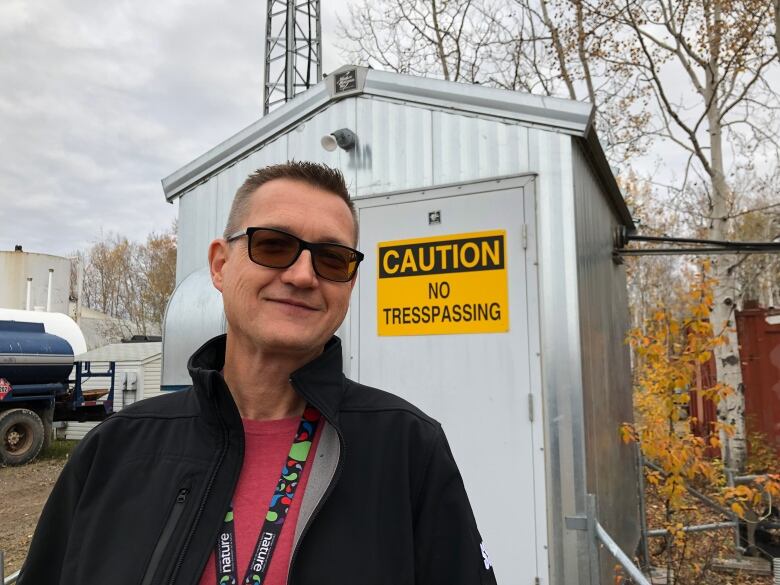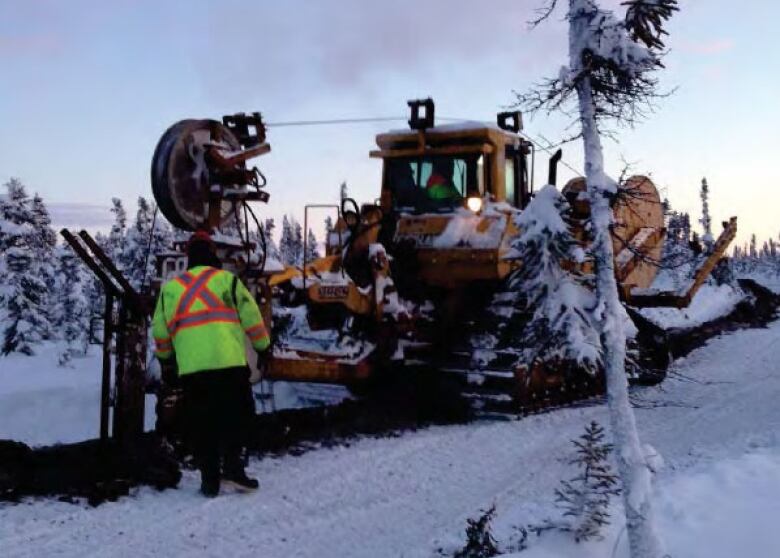N.W.T.'s Mackenzie Valley fibre line not living up to expectations, experts say
Local internet service providers are supposed to extend the last mile of internet to communities

When Jerald Sibbeston first learned about the Mackenzie Valley Fibre Link, he saw a business opportunityto start an internet service provider in Fort Simpson, N.W.T.
Then he realized how much it would cost.
"There is interest at the local level [in internet service providers], but then you run into the conflict where you find a guy like me who says, 'Geez, this looks like a good business opportunity' if I had enough money," Sibbeston said.
"But I don't."
The 1,154-kilometre Mackenzie Valley Fibre Link runs from near Fort Simpson where it connects to line already in place when it was built to Inuvik. It hasconnection points in five Mackenzie Valley communities along the way, including Fort Simpson, all of which are serviced by Northwestel, the territory'sdominant internet provider.
The line is intended to eventually extendto Tuktoyaktuk.

But three years after the line was completed, experts in the N.W.T.'s telecommunications field say that the Mackenzie Valley Fibre Link project is not living up to its original purpose of providing communities along its route with competitive, reliable internet services.
There's very few companies or organizations that have the pockets to do that last mile.- David Wasylciw, technology business consultant
They say more needs to be done to foster entrepreneurs like Sibbeston, or other internet service providers, to compete with Northwestel's monopoly inN.W.T. communities.
Territory has role to provide internet 'highway'
David Wasylciw, a technology business consultant, said it is expensivefor local internet service providers to build all of the infrastructureneeded to connect homes with the high-speed fibre line internet what's called the "last mile."
"There's very few companies or organizations that have the pockets to do that last mile," Wasylciw said. "It's not just expensive, it's also a pain logistically, there's a lot of work involved in it and that's why you're not seeing a lot of uptake from internet service providers at the community level.

"That whole last piece that's missing is one of the biggest parts."
Finance Minister Caroline Wawzonek told the N.W.T.Legislative Assemblyin May that the job of bringing fibre internet to homes, schools and businesses falls on internet service providers like Northwestel. The territory's job, Wawzonek said, is to provide the Mackenzie Valley Fibre Link "highway," not to cover the last mile of infrastructure.
"The government is not in the business of running a line from the point of access into the homes," she told the legislature.
A June report from the territory's government operations committee notes the government's position on the fibre link project has made it "unclear" which communities are still waiting for local service providers to set up internet. As well, the report saysthere is "still no clear plan" for connecting communities that are not located directly on the fibre link path.
The government is not in the business of running a line from the point of access into the homes.- Caroline Wawzonek, N.W.T. finance minister
Northwestel currently providesfive communities along the fibre line with access: Tulita, Fort Good Hope, Norman Wells, Fort Simpson and Wrigley.
Andrew Anderson, the company's director of communications, said in a statement that Northwestel was able to lower internet package prices by $144 per customer on average while also increasing internet download speeds to 15 Mbps (Megabits per second) after connecting to the fibre line.
The project's website says special pricing will be created in order to "encourage new, locally-owned internet service providers in Mackenzie Valley communities." But as experts point out, no one has stepped up to create a local internet service provider to compete with Northwestelsince the project was completed in 2017.
Shared spaces for internet service providers lacking
Jeff Philipp, the CEO of SSi Canada, was one of the original bidders competing with the Northwestel-Ledcorjoint bid for the Mackenzie Valley Fibre Link project. He said his company does have some facilities in the communities where the line was passing through, but they did not meet the standards outlined in the N.W.T.'s original tender.
Philippsaid he pushed the territorial government to add a requirement for the construction of new co-location centres: data centres where businesses could rent space and computer hardware to better connect communities to fibre internet. This way, he continued, the buildings would be public and open to anyone.
It's like building an airline that's going to fly straight to Tuktoyaktuk ... and land in every community, but there's no airport.- Jeff Philipp, CEO of SSi Canada
Philippwas neithersuccessful in his company's bid nor in swaying the government to make the suggested changes.
"It's like building an airline that's going to fly straight to Tuktoyaktuk and it's going to land in every community, but there's no airport," Philipp said. "There's no place for you as a customer to ... get on that thing."

Wasylciw said government-owned co-location centres would take the cost burden off local companies and would help them compete with Northwestel.
CBC has reached out to the territorial government for comment but did not receive a reply by the time of publication.
Limited funding for N.W.T. internet startups
Sibbeston estimates it would take $250,000 to get his project in Fort Simpson off the ground. The money would go toward buying land close to the fibre connection point, building a tower, and other start up costs.
The territory has a handful of grants for entrepreneurs, including a $25,000 yearly fund to help with startup costs. There are no programs that specifically targettelecommunications.
The other possible option for entrepreneurs like Sibbeston is to apply to the federal government's new $1.7 billion Universal Broadband Fund, that is looking to fund projects that will "close the gap in connectivity" for Canadians living in underserved areas.
The fund has not yet been launched.
CBC has reached out to the federal government for comment but did not receive an immediate response.
New service on horizon
Wasylciw said the best thing to do is for the government to invest in the infrastructure needed for small businesses to start up internet service providers in the community.
"We already have something in the ground let's keep working on it, let's keep expanding it," said.

At the same time, Philipp said the territory needs to plan ahead for the next up and coming technology.
Elon Musk's company SpaceX has already applied for a Basic International Telecommunications Services license (BITS) to offer high-speed internet to Canadians living in remote areas. The company would beam internet directly into homes via satellite.
Philipp said this technology could render the Mackenzie Valley Fibre Link "obsolete" for N.W.T. communities.
"It's going to be a big benefit for the North," Philipp said. "Any little community is going to say, 'You know what, we don't need to rely on the fibre line, we can put a terminal on the roof of the house or the roof of the school to connect in.'"












_(720p).jpg)


 OFFICIAL HD MUSIC VIDEO.jpg)
.jpg)



























































































